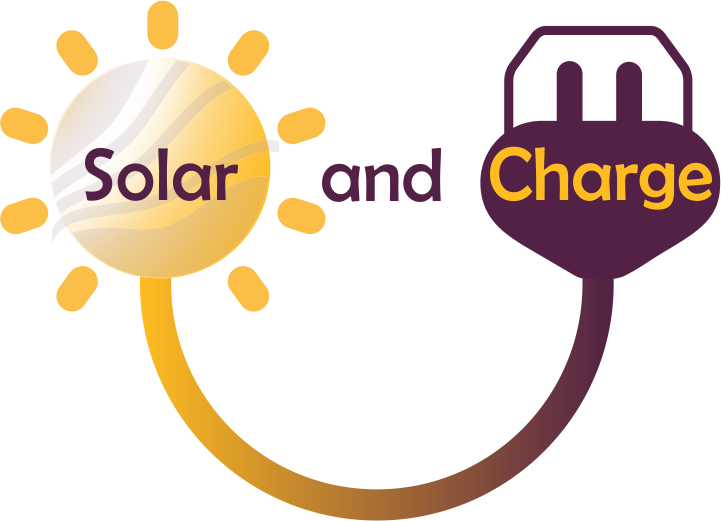
Cambridgeshire Home
This good size sized five bedroom detached house is a large energy user and the owners were particularly worried about rising energy costs. For the owner the key considerations were:
- reduction in energy bills
- reduction in per kWh rate by using more of the cheaper night energy
- five year payback
- reduced CO2 footprint
- potential for motoring costs using the free energy generation directed
The team at Solar and Charge proposed a system that came in at around the £16K budget of the owner and included installing a well specied EV charge point.
The proposal
Solar and Charge supplied and installed:
- 8.2 kw JA Solar panels (20 panels)
- 16.12 kWh of Fox lithium batteries
- 6 kW hybrid inverter rating
- Ohme homo pro EV charging point
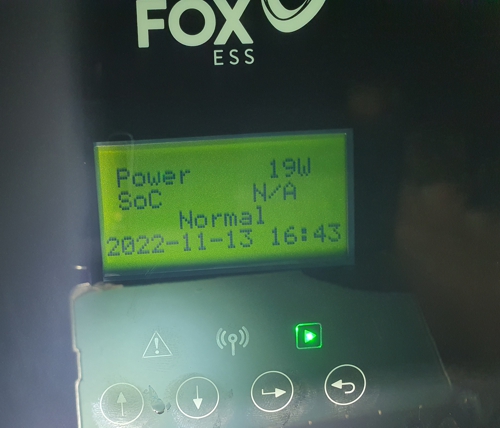
85% of electricity purchased in Feb 23 was at the cheaper night rate
Effective purchase rate was at 16p per kWh – pretty much at the rate pre-price increases – compared to the government susidised net cost of 32p per kWh
54 kWh only purchased at day time rates!
£211 saved in Feb 23 – expected to be better in March and on.
2024 offer: Extensively specified large home system
Only £15,950 £14750*
Take advantage of our early 2024 deal for a system similarly specified to one in our Cambridgeshire Home case example here. system will include:
- 8 kW JA Solar, or similar exceptional quality panels with manufacturer’s twenty five years warranty included
- 16 kWh battery storage system
- 6 kW Fox inverter with an extended manufacturer’s ten year warranty, installation, all wiring and software
- Post installation after care and guidance for maximising output from your system
*first 20 installs of 2024
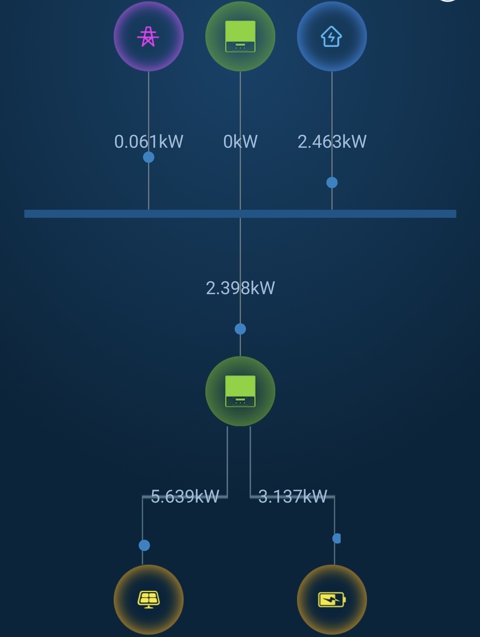
In practice – energy ins and out – for a Spring day in Mar 23
For may people, confusion abounds about energy generation and solar – where the cost is and where the savings are. From a money perspective, you should think of solar as an investment – like any savings account you have – you will have a rate of return (interest rate). A well designed, well installed and well run enegry generation system will give you very good returns !
But what happens in practice? Firstly, for most of the in the UK, – the sun shines and your solar panels produce at a time when household energy needs are the least. Typically most household use energy at rate of 0.3 to 0.5 kW in the background – feeding fridges, lights, chargers and similar. Peak usage starts when kettles boil, ovens turn on or showers flow. That is, early morning and evenings.
That is why Solar and Charge recommend a hybrid system that includes solar, battery, choosing effective tarriff of energy supplier and potentially having other places to store ‘overproduced energy.
The owners of this house opted for a decent amount of battery storage, So in Feb 23, they were able to purchase 85% of their energy at the much lower night rate (around £0.16 per kWh) – that’s huge saving in its own right.
Secondly, they opted to for the most part to heat water for showers and taps using their immersion heater – so effectively the 200 litres of hot water in the well insulated hot water cylinder acted to further store energy produced by solar panels.
Then they used the still excess energy charge their electric vehicle. Choosing the right energy supply tarriff meant the EV charged mostly after midnight at favourable rates then.
Finally, they exported some of the energy that could not be used ‘back to the grid’.
We captured the energy story for this house on 19 March 2023, at 09:30am by taking a snapshot of the systems that record the enegy ins and out.

Weather
Weather: a mild day in mid March, with decent but clouded sunshine. All snapshots were taken around 09:30am within 2 mins of each other
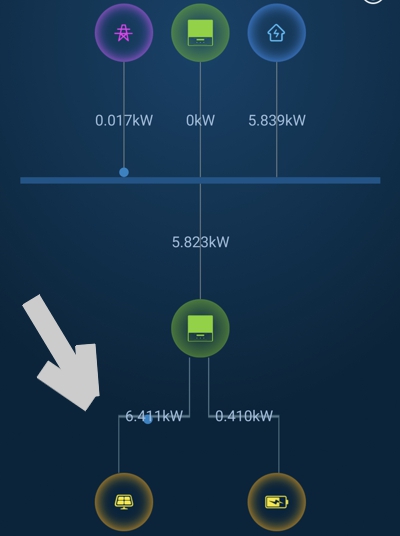
Solar output
The south facing roof was making the most of the spring sunshine with an generation at the rate of 6.4 kW – about £2 per hour at current costs)
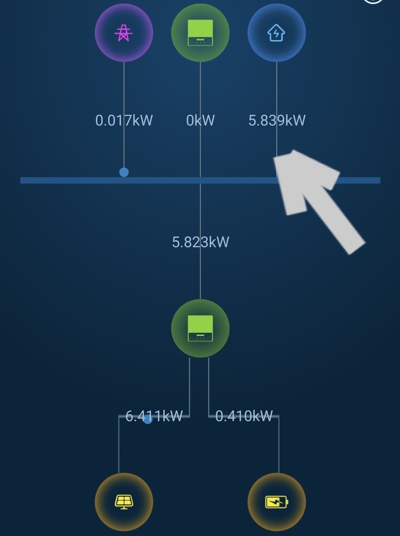
Energy usage
Some of 6.4 kW was applied to the immersion heater to ‘bag’ hot water (3 kWh) and some to background house usage (0.5 kWh).
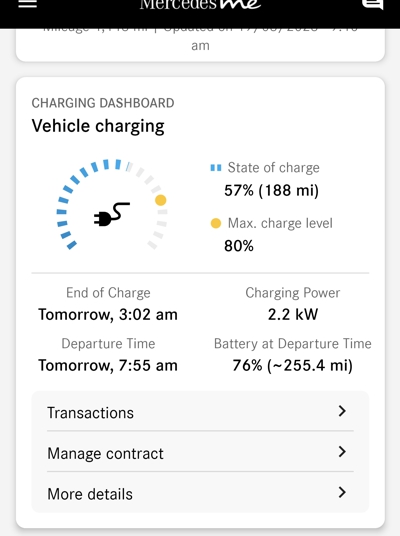
EV Charging too
Some of 6.4 kWh was put to slow fill the EV (2 kW). That’s around 8 miles of free of fuel cost travel (normal diesel cost £1.80) generated every hour
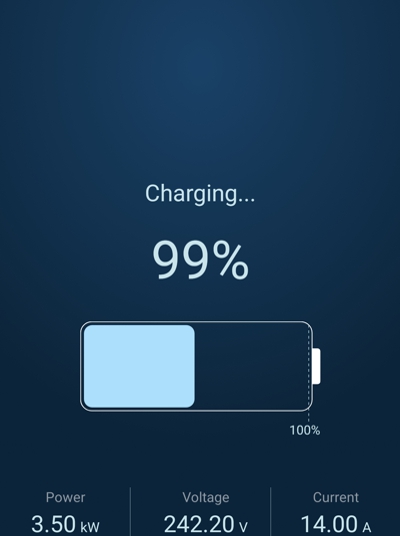
Battery buffer
The battery was used to store what was not used and also acted as a buffer for when the sun was less intense and to carry over cheap rate electricity
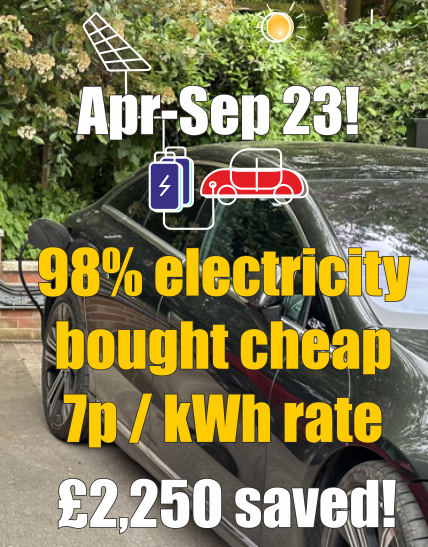
‘Real World Experience’ – Review!
6 months to Sep 2023
Its always worth reviewing. For this installation there were a number of changes including as we all know price hikes in electricity costs. Also, with the solar and battery install, they had a new EV car. This meant lower diesel cost but much higher electric usage. In the summer they used the electric immersion for hot water needs – to make use of all that solar energy! Deciphering all that, we estimate on like for like periods:
- electricity bought in fell by 80% +
- 97.5% of electricity was bought at the lowest tariff of 7p per kWh – ‘night rate’
- £432 was earned in exports back to grid at 15p / kWh. Yes correct, buy at 7p and sell at 15p!
- total savings/income £2,250 for the six months
- the EV meant no diesel buying – estimated at £2,400 for the 6 months
Naturally, winter production will be lower than summer, but we estimate that £2,250 will convert to £3,500 for the whole year. Lets See!
